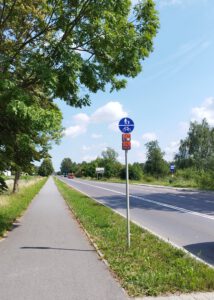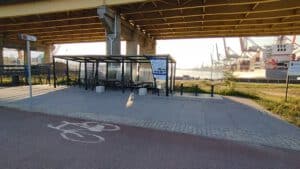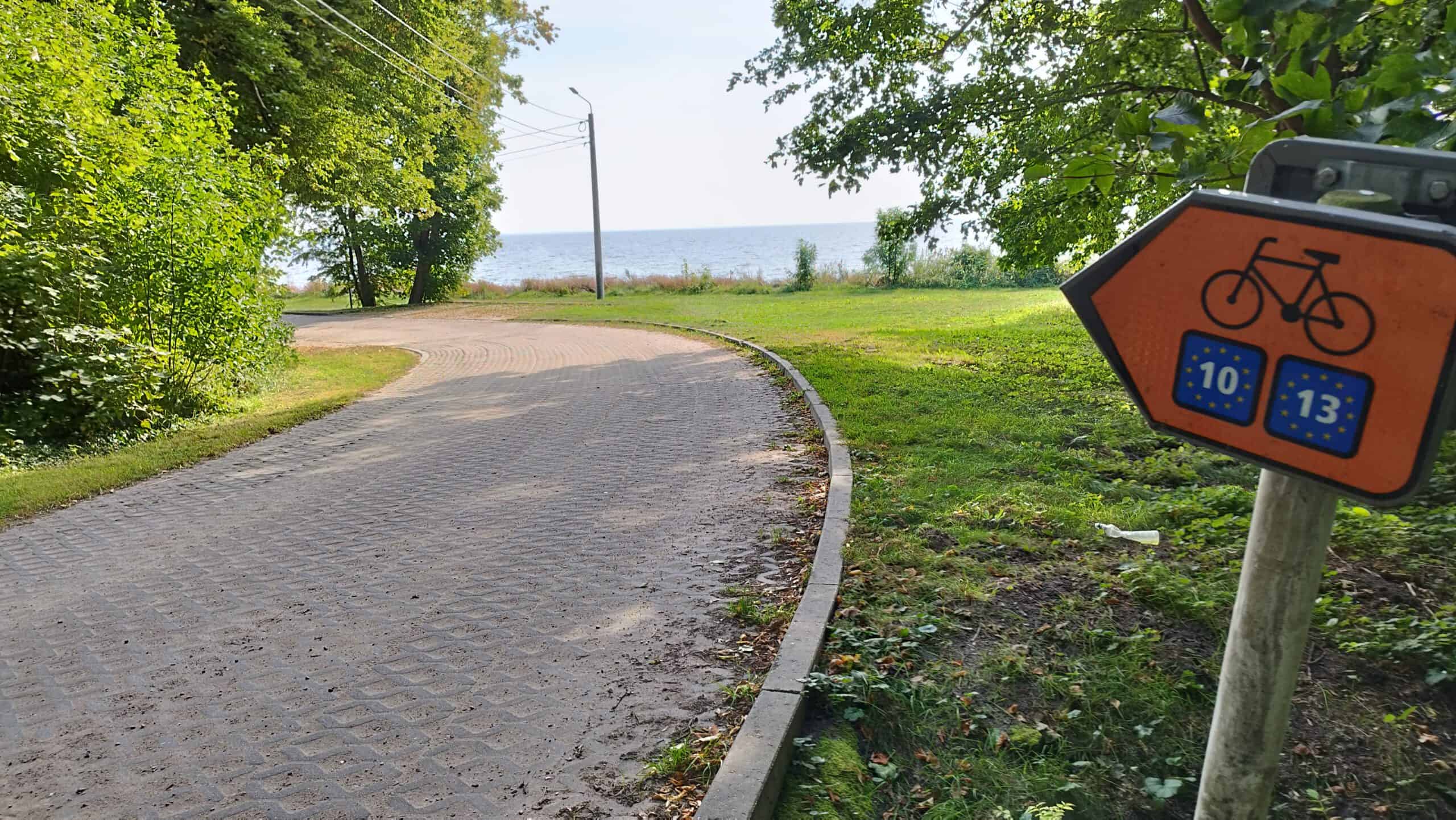
Route Assessment in Pomorskie
21 November 2024
EuroVelo 10 Route Assessment in Pomorskie: Enhancing Accessibility for Cyclists
This summer, as part of the BAB Interreg BSR project, one of the project partners, the Pomorskie Tourist Board conducted a comprehensive inspection of the EuroVelo 10 route along Poland’s Baltic coast. Led by certified EuroVelo Route Inspector Tomasz Legutko from the Pomorskie Voivodeship’s Marshal Office Tourism & Sports Department, the assessment focused on evaluating accessibility, infrastructure, and the overall cyclist experience across this unique and historically rich route. This report highlights key findings and recommendations to enhance the journey for cyclists traversing the EuroVelo 10 route in Pomorskie.
The primary aim of the inspection was to assess how well the EuroVelo 10 route in Pomorskie meets standards for accessibility, safety, and quality. Inspectors evaluated infrastructure, signage, availability of local services, environmental impact, and seasonal accessibility challenges. The assessment team included local authorities, route planning experts, and tourism representatives who collaborated to identify the route’s strengths and areas for improvement.
The EuroVelo 10 route in Pomorskie offers a unique cycling experience featuring both urban and remote natural landscapes. However, accessibility varies widely:

- Well-serviced coastal towns: Key towns along the route, such as Ustka, Łeba, and Władysławowo, offer extensive amenities and facilities. Cyclists can easily find accommodations, restaurants, bike repair stations, and local shops catering to tourists. These towns are popular coastal destinations with well-developed infrastructure, ensuring that cyclists have easy access to essential services and a range of dining and lodging options.
- Moderate accessibility in smaller villages: Smaller seaside villages, including Rowy, Poddąbie, and Dębki, provide a moderate level of services, such as guesthouses, cafes, and seasonal stores. These areas cater to local and seasonal tourism but may have limited hours, particularly outside of the summer season. For cyclists planning extended stays or overnight stops in these villages, careful planning may be necessary to secure accommodation and supplies.
- Remote route segments: The route’s scenic yet remote segments, particularly near the Słowiński National Park and inland areas like Smołdzino and Główczyce, have minimal facilities. Cyclists may need to venture off-route to access essential services like grocery stores or repair stations. Still, they stay within the main route corridor, which is an asset. In some areas, the inspection noted these areas as particularly challenging, especially for cyclists who may need emergency assistance or maintenance help.
- Dedicated rest areas: The route includes dedicated rest spots, especially along the forested and coastal sections. While these are valuable additions, they are not consistently placed, leading to stretches without formal rest areas. Inspectors recommend the addition of more shaded and sheltered spots where cyclists can take a break, particularly in areas with few nearby facilities.

The EuroVelo 10 route showcases a mix of high-quality infrastructure in some sections and more challenging segments in others:
- Signage and navigation: Signage along the route is generally effective in the more populated coastal areas but is often sparse in rural or forested regions. Inspectors noted a need for more frequent and visible signage, especially in complex areas where the path intersects with local roads or pedestrian paths. Improved signage will enhance navigation for both local and international cyclists, who may be unfamiliar with the region’s terrain and language.
- Quality of pathway and safety measures: The route features a variety of surfaces, from paved paths to forest trails. While the diverse landscape adds to the route’s appeal, certain sections may be challenging for less experienced cyclists or those with road bikes. For example, sandy paths along the dunes or uneven terrain in wooded areas require particular attention to safety measures. Especially sections around the sections around Słowiński National Park require developments and attention, as they limit the route visibility. Inspectors recommend installing safety barriers or indicators in potentially hazardous areas to improve overall route safety.
- Seasonal accessibility: Popular areas, such as Ustka and Władysławowo, see high traffic during peak tourist seasons, which can affect both accessibility and the cycling experience. The influx of tourists during summer months can lead to crowded paths, especially where cycling paths merge with pedestrian areas. Inspectors suggest creating clearer pathways or designated cycling lanes to facilitate smoother flow and enhance the experience for cyclists.

The assessment highlights several key recommendations to enhance the accessibility of the EuroVelo 10 route. Implementing these recommendations could significantly improve the overall cycling experience, attract more tourists, and boost the local economy.
- Enhanced signage in remote areas: By improving signage in less developed areas, cyclists will have better guidance through complex or isolated stretches. Clear and frequent signs in both Polish and English can help international tourists navigate the route with confidence.
- Developing additional rest stops: Introducing more rest areas along the route, particularly in remote stretches, will provide cyclists with shaded spots to rest and refuel. Access to drinking water and basic repair kits at these stops could further support long-distance cyclists.
- Continued infrastructure development: Addressing the incomplete sections around Słowiński National Park and other rural segments will provide a more seamless cycling experience. The inspection highlighted these areas as priorities for future development to align with the broader EuroVelo standards.
- Collaborative solutions for seasonal management: By working with local authorities to manage cyclist and pedestrian flow during peak season, the route can offer a more consistent experience year-round. Creating dedicated cycling paths or scheduling shared space regulations during high season can mitigate overcrowding and enhance safety.
This assessment serves as a vital step towards improving the EuroVelo 10 route in Pomorskie, ensuring that it remains an appealing destination for cyclists of all levels. The EuroVelo 10 route in Pomorskie is a stunning and diverse journey that showcases the best of Poland’s Baltic coast. From bustling coastal towns to tranquil forested paths, it offers an array of experiences for cyclists of all levels. While certain areas face accessibility challenges, ongoing improvements and collaboration with local authorities promise to transform the route into a premier cycling destination. By implementing these recommendations, the Pomorskie region aims to make EuroVelo 10 a top choice for both local enthusiasts and international tourists.






